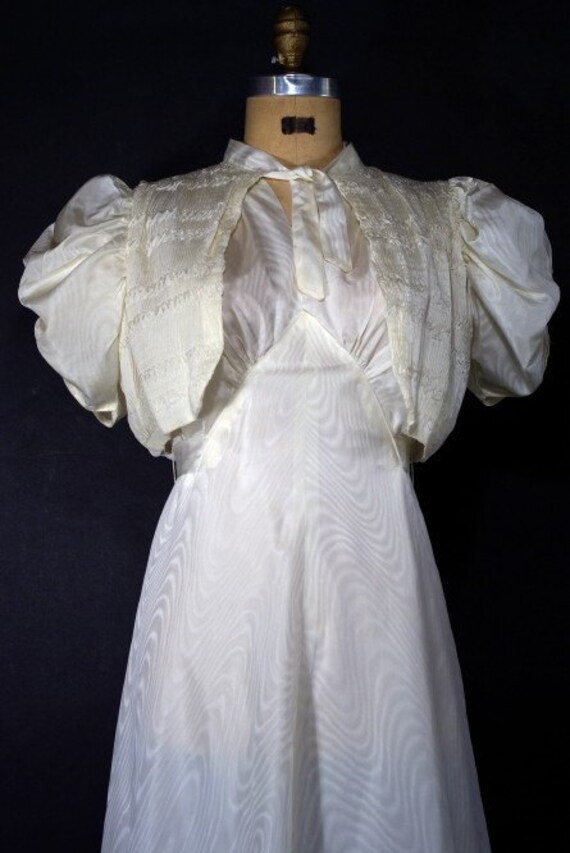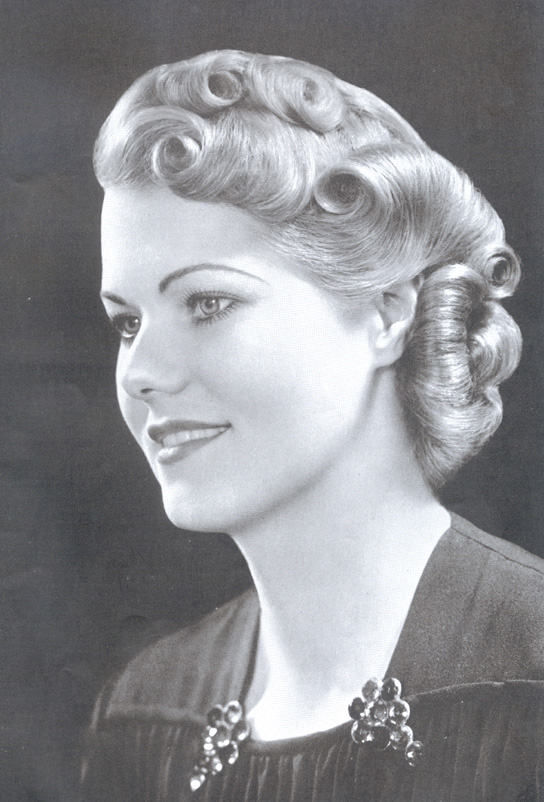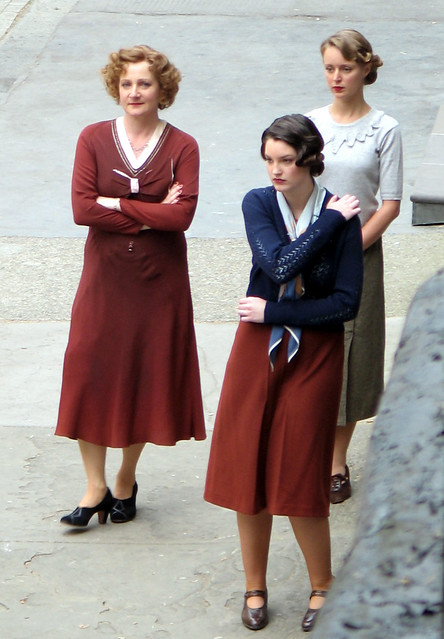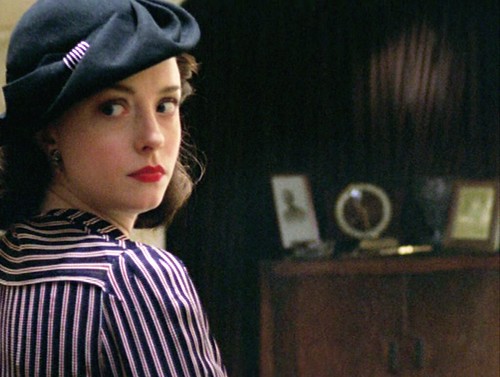Last week in the 1920's, we had straight, tunic-like dresses that were meant to disguise a woman's figure. In the 1930's, we see a return to structure and tailoring in garments, with emphasis on the shoulders and waist. The film industry and celebrities also began to influence fashion for the first time, and vice versa. "Let's poke it with a stick."
In the late 1920's, long skirts were coming back into fashion. Designers eased back into them, and by the 1930's, they had lowered from just below the knee to just above the ankle.
The skirts on most evening gowns went back to floor-length.
Shoulders became a focal point of both day and evening dresses. Volume was the important thing, not how it was achieved. Designers experimented with different ways to get that added
poof.
The most common way to accentuate the shoulders was to have lighter fabrics that were loose around the shoulders so that they fluttered out (seen above).
As I mentioned before, waistlines came back into existence and cinched in at the natural waist.
In addition to focusing on the natural waist, several dresses and jackets emphasized the empire waist.
It seems to me that this was really a time for experimentation as far as textiles and embellishments go. Though chiffon and other light fabrics were popular, I've seen a veritable smorgasbord of different fabrics used in different ways.
The short bobs of the 1920's remained popular during the entirety of the 1930's. For those who opted to keep their hair long, buns were worn at the back of the head or the nape of the neck, with curls that foreshadowed the 1940's.
Cloches stayed popular until the early-mid 1930's, when they were replaced by small hats that usually tilted over the forehead at an angle.
As one last shout out, I've been watching a lot of David Suchet's Poirot adaptations lately, which (in addition to being brilliant adaptations of Agatha Christie's novels and short stories) really showcase the fashion, art, and architecture of the mid 1930's.
At the end of the 1930's, World War II broke out in Europe, which will lead us into next week's look at the 1940's. Once again, we'll see a near stand still of fashion progress (like in the Regency Era due to the Napoleonic Wars), and a return to simplicity that always comes around by necessity during wartime.


















No comments:
Post a Comment
,mmmmmmmmmmmmmmmmmmmmmmmmmmmmmmmmmmmmmmmmmmmmmmmmmmmmmmmmmmmmmmmmmmmmmmmmmmmmmmmmmmmmmmmmmmmmmmmmmmmmmmmmmmmmmmmmmmmmmmmm'aaaaaaaaaaaakAAAQA
I was going to type something clever, but my cat provided this triumph of literature. Thank you for commenting! Just keep it clean, on-topic, and respectful.